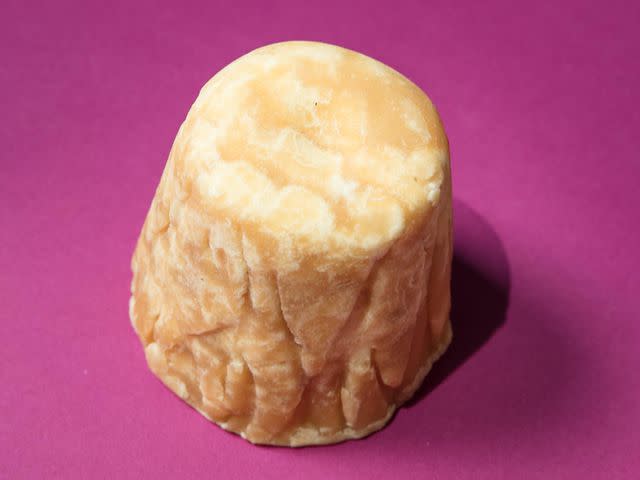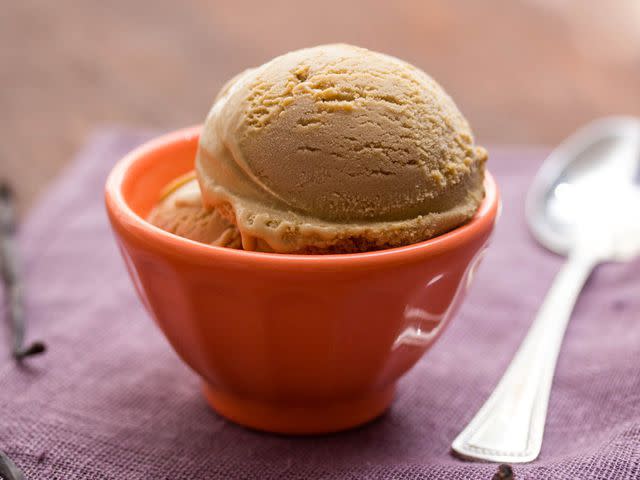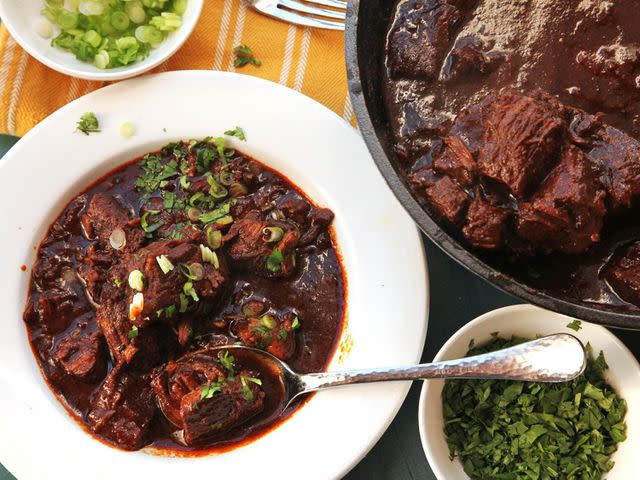How to Use Raw Sugar: Jaggery, Gula Melaka, Panela, and More
These burnished reductions of cane and palm juice have a remarkable depth of flavor. Here's how to use them in the kitchen.

Serious Eats / Vicky Wasik
Some people buy fridge magnets. Others get floppy hats. When I was a kid, we collected snow globes. But these days, I take my travel souvenirs like I take my psychological coping mechanisms: edible. And my go-to edible souvenir is sugar.
I don’t mean plain, newfangled refined white sugar, though. I’m talking about the raw stuff. Gula melaka from Malaysia, jaggery from India, piloncillo from Guatemala, and panela from Mexico. Often pressed into dense bricks or cones as part of the drying process, these burnished reductions of cane or palm juice are rife with impurities that grant them a remarkable depth of flavor. Depending on the plant, place of origin, and production method, raw sugar tastes in turns smoky, bitter, caramelized to the brink of burnt, deeply fruity, and redolent with tropical sweetness.
Pound for pound, raw sugar is less sweet than the processed stuff, and it’s equally at home in desserts and savory applications. But more importantly, raw sugar intimately captures the concentrated essence of a place and its people’s food—in an easily portable, essentially immortal form.
That last part’s why I love it as a souvenir. Lots of people collect honey when they travel, but if you hate checking luggage for that one bottle of liquid, raw sugar fulfills a similar niche, no checking hassle required.
In my pantry right now, I have a smoky, savory sugar puck from Guatemala; a flaky, grass- and molasses-tinged ball of jaggery from India; crystals of cane sugar from Taiwan that recall candied winter melon; and a raisin-y, twangy brick of sugar from China that’s so precious to me I treat it like finishing salt. Each has its own use in my kitchen, and, unlike spices or bottles of olive oil, these sugars don’t degrade much with time. (They do, technically—moist bricks will dry out, and some volatile compounds inevitably vaporize and oxidize—but far less so than other pantry goods.)

Serious Eats / Vicky Wasik
We’ve covered the great wide world of sugar before, but here’s a quick primer on the most commonly available raw sugars on the market. Note the absence of brown sugar, which isn’t actually raw—it’s just refined sugar with a little molasses mixed back in!
Panela (a.k.a. piloncillo): From Central and South America; made from sugarcane; ranges from toffee to dark-roux coloring.
Jaggery (a.k.a. gur): From India; usually made from sugarcane but sometimes made from date palms; ranges from tan to chocolate coloring (pictured above).
Gula jawa (a.k.a. gula melaka): From Indonesia and Malaysia, respectively; made from coconut palm; typically dark brown.
Palm sugar: When labeled as such, usually a product of Thailand and cut with white sugar for a more uniform khaki color and greater sweetness.
Muscovado: Granulated; not pressed into a mold; produced in India, the West Indies, and other sugar-growing regions the British meddled with. A high natural molasses content means it’s usually among the darkest of raw sugars.
Turbinado (a.k.a. "sugar in the raw"): The most standardized of the raw sugars; produced all over. It comes in coarse crystals and is light caramel in color.
I’m hesitant to give tasting notes or any more specific identifiers, since there are more differences within the above categories than between them. But generally speaking, the darker the sugar, the less sweet, and the more bitter and savory it tastes. That said, darker doesn’t mean better or more complex; color is just a property of how the sap is cooked down, not an indicator of quality or range of flavor. Some super-dark sugars are just one-note chocolaty, and others might be too high in acids for certain dishes, such as those with dairy, in which an acidic sugar can curdle the milk. The only way to truly know what a raw sugar tastes like, and what it’s good for, is to snap off a piece and try it.
As for how to actually use it: If you’re dealing with a dense brick of sugar, a couple seconds in the microwave will help soften it. Then you can chop it just like chocolate: with a bread knife. Or, for smaller amounts of fine shavings, a Microplane works wonders.
Now here’s what to cook with it.
Desserts, Duh

Serious Eats / Vicky Wasik
Dozens of Latin American desserts get their rich depth of flavor from raw sugar, be it a simple rice pudding or cinnamon-spiced syrup over crisp, anise-scented fritters. Piloncillo and panela’s caramel vibe partners well with cinnamon, orange, anise, and vanilla, all big-deal baking spices in the region. Across the Indian subcontinent, jaggery sometimes takes the lead in flavoring sweets, most notably chikki, a roasted-nut brittle set with lava flows of molten jaggery.
When baking, I often turn to turbinado and muscovado sugars if I want to lend a subdued sweetness to roasted fruit, sweet spices, and butter. Plus, both types of sugar are granulated, making them easier to cream and/or substitute for white or brown sugar. Note that I said easier, which isn’t the same as "do whatever the hell you want"—chemically leavened sweets like cakes and cookies require a precise balance of acidity and alkalinity in order to rise, and if you go changing ingredients and ratios, I refuse to be held responsible for your oven disasters. Instead, seek out recipes specifically formulated for those sugars, such as the butterscotch sauce in this millionaire’s shortbread recipe, or muscovado’s pairing with wood smoke in this smoked ice cream.
Don’t forget the garnish: Turbinado’s coarse crystals make it an ideal crunchy topping for other baked goods, and I think it works especially well with fall and winter fruits, like apples, pears, and plums.
Also Go Savory

Serious Eats / J. Kenji López-Alt
Here is where quality raw sugars really shine: Their complexity can be used in small doses, like a spice, to bring out the best flavors from savory ingredients. Italians may want to cover their eyes now, but a pinch of sugar really can rescue a subpar tomato sauce. The same goes for several Indian dishes and some several Thai curries; in the latter, the fire and funk of chiles and fish sauce can achieve remarkable balance with a pinch of palm sugar. And, when making a pot of chili, I like to enhance the smoky sweetness of chipotles with a bit of panela—it adds a subtle richness, similar to the dash of chocolate in a mole.
Raw sugar is also perfect for boosting the flavor of sweet-and-savory chutneys and sauces, such as Indian tamarind chutney, peanut dipping sauce, or your favorite cranberry sauce.
And Don’t Forget to Drink It

Serious Eats / Vicky Wasik
That Chinese raw sugar I love so much? The one that tastes like raisins and dates, and that I sometimes snack on plain? In its production region of Yunnan province, it’s dissolved into hot water and drunk to boost low blood sugar—often the result of drinking too much tea. The simple beverage is wonderfully restorative, and I’ve taken to making a modified version whenever I have a sore throat.
In Mexico, panela plays a similarly comforting role in champurrado, a corn-thickened, spiced hot chocolate. See also: chai, which is great with jaggery, and Thai tea with condensed milk, where palm sugar fits right in.
Come warmer weather, limeade is superb when sweetened with raw sugar, and it’s very much A Thing in both Latin America and Southeast Asia, where sweltering heat has me reaching for a fresh bag of calamansi juice every 15 minutes.
Oh, and one more suggestion: As good as that limeade is on its own, it's even better when dosed with some rhum agricole. Because one quality sugar product deserves another.
February 2018
Read the original article on Serious Eats.